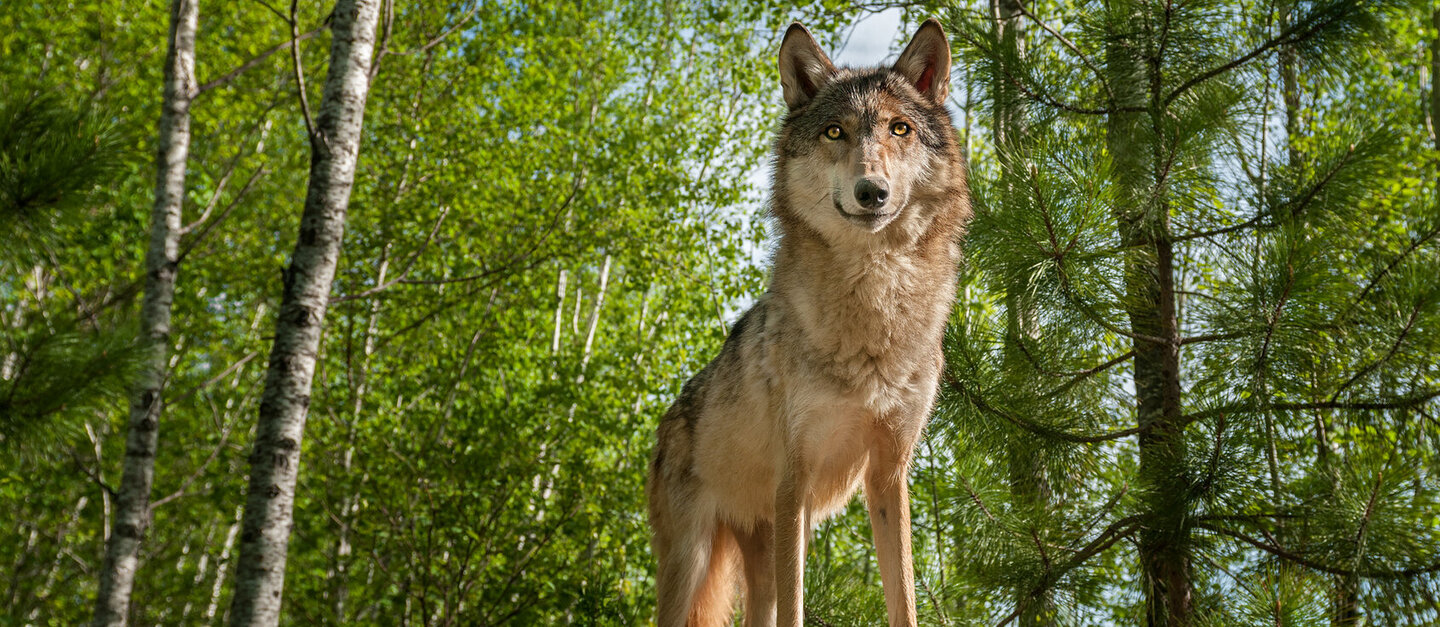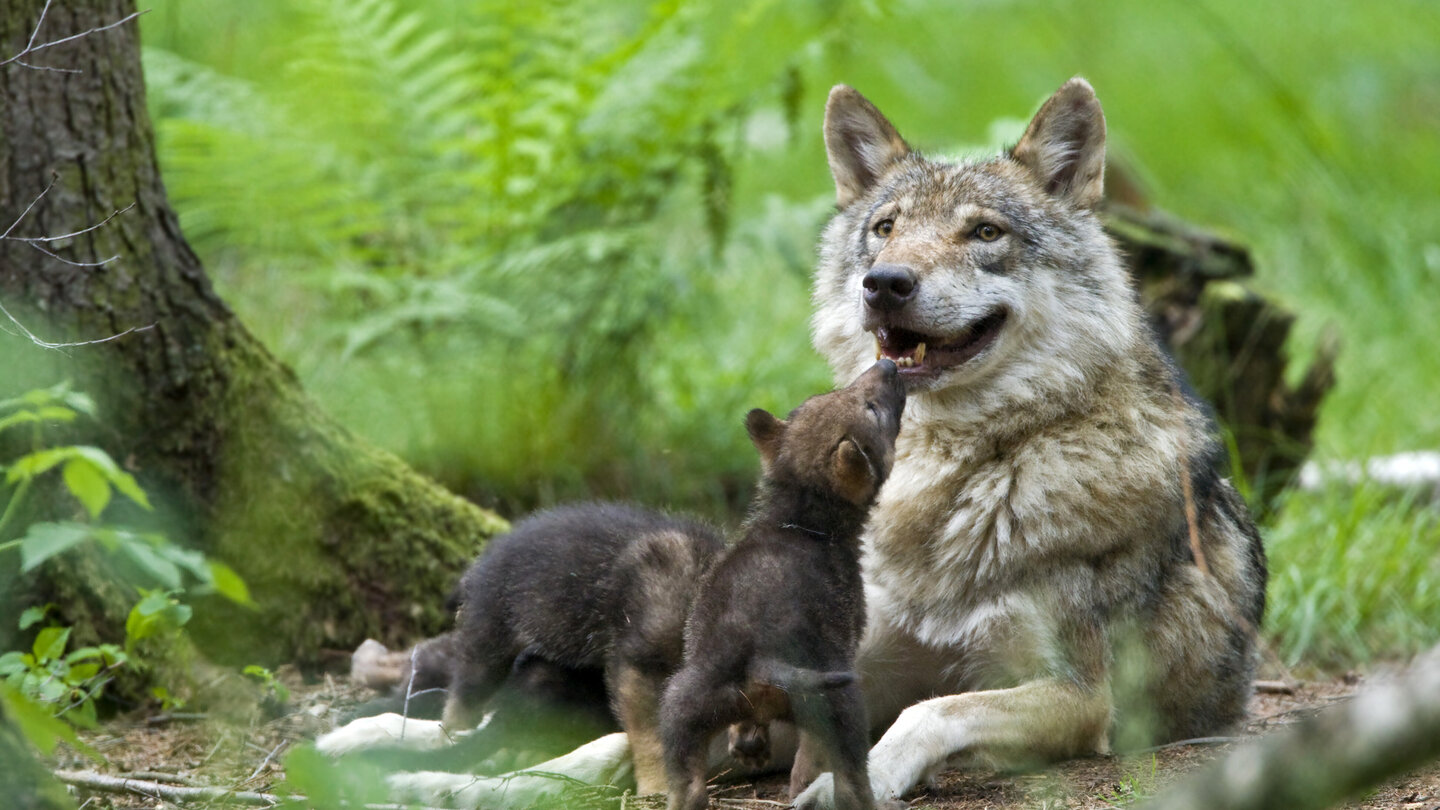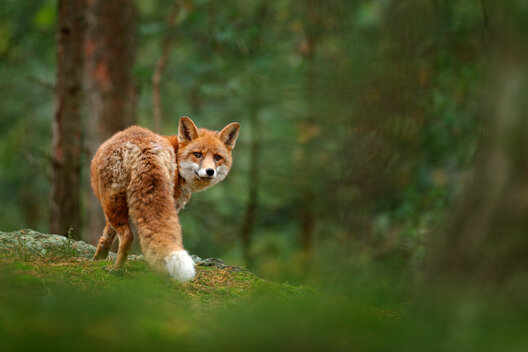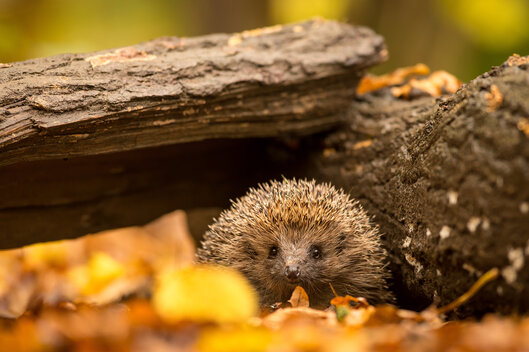Wolves are usually not dangerousHow wolves and humans can live well together
The return of wolves to Germany frightens some people. But it is a myth that the animals are dangerous to us. And we can also protect sheep and goats on pastures without having to shoot wolves.
Wolves have been living in Germany again for over 20 years. There are now over 180 packs1 but their numbers vary every year. After being considered extinct in this country for 150 years, this is a great success for species conservation. Animal and nature conservationists are delighted. But it also scares some people. Animal owners are worried about their herds. This is why hunters would like to target the small population again. Yet wolves are not usually dangerous to humans. And even where animals are kept for farming, peaceful coexistence between humans and wolves is possible with a few measures.
Wolf profile
- Habitat: In Europe, wolves generally live in forests and grasslands. The animals can be found in North America, but also in deserts or in the Arctic tundra.
- Size and weight: Central European wolves weigh an average of 40 kilograms. In other parts of the world, they can weigh up to 80 kilograms. Due to their appearance and their shoulder height of around 80 centimetres, they resemble the German shepherd dog. The typical characteristics of the ochre-grey to reddish-grey wolves in Europe include a straight back, a tail with a black tip, a light underside of the muzzle and a dark back.
- Food: Wolves mainly eat roe deer, red deer and wild boar. They do not endanger their populations, but rather regulate them. Wolves also kill sick animals. And they leave some of the prey behind for scavengers. Adult wolves need around three kilograms of meat a day. If necessary, however, they can go for over a week without food.
- Way of life: Wolves live in packs of five to ten animals. These consist of the parent pair and the young of the last one to two years. Young wolves leave their pack at the age of around two years when they become sexually mature. On average, wolf territories in Germany are between 100 and 350 square kilometers in size. Wolves defend them against other wolves. They do not allow others to settle in their territory and adult animals leave the pack again and again. This means that the number of wolves in a territory does not increase at will.
- Speed: Wolves reach top speeds of up to 50 kilometers per hour.
- Senses: With their sniffer noses, wolves can scent other animals up to 270 meters into the wind. Wolves can hear conspecifics at a distance of up to nine kilometers.
No attacks on people in Germany for decades
The fear of wolves is primarily fueled by fairy tales of the "big bad wolf". However, they have not attacked any humans since their return to Germany. In both Europe and North America, incidents or attacks by wolves are extremely rare. And in the few cases that have occurred, the wolves were either suffering from rabies or had become too accustomed to humans feeding them. Germany has been considered rabies-free since 2008. In this country, it is also forbidden to feed wolves under the Federal Nature Conservation Act.
Wolves keep their distance from humans
Wolves are naturally cautious towards humans and avoid meeting them directly. This means that humans rarely encounter wolves, even in areas populated by wolves. Anyone who does come face to face with a wolf should remain calm and keep their distance. If the animal does not retreat and the situation seems uncomfortable, speak loudly or clap your hands to make yourself heard. If the wolf approaches you unexpectedly, stand still and make yourself big. Try to intimidate him.
If people are accompanied by dogs, this can influence the behavior of wolves. Dogs should therefore be called to you, kept on a lead and calmly withdrawn with them.
Wolves are important forest dwellers
Wolves fulfill important tasks in our forests. Where they live, the number of their prey, such as roe deer or red deer, remains at an appropriate level. This protects the shrubs and trees that they would otherwise nibble on in the same places over and over again. Wolves also hunt and eat the weak and sick animals. In this way, they ensure that the stronger and fitter ones reproduce. The populations of wild animals are therefore better able to withstand harsh and changing environmental conditions. Wolves are therefore an important part of our ecosystem.
Protecting herds with fences and dogs
In recent years, wolves have repeatedly killed sheep, goats and, more rarely, cattle, horses and fallow deer on pastures and in enclosures. If sheep and goats are not protected, they are particularly easy prey for wolves. Unlike deer, stags and wild boar, they can neither flee nor defend themselves. Wolves do not distinguish between wild animals living in the wild and farm animals. They choose the easiest route. Farmers must therefore protect their animals, especially in wolf territories. Electric net or high wire mesh fences are suitable for this purpose.2 For their safety, they can also bring the animals into the barn at night or guard large flocks with livestock guarding dogs. Most federal states provide subsidies so that sheep and goat farmers or operators of wildlife enclosures do not have to bear the costs of protection alone. The authorities also compensate them financially in the unlikely event that something happens to their animals even though they have taken protective measures.
Hunting wolves does not solve problems
Unfortunately, large sections of the traditional hunting community and animal owners' associations, as well as politicians, continue to publicly stir up sentiment against wolves. This fuels prejudices and fears. Time and again, wolves are also shot illegally in Germany. These illegal shootings are the second biggest threat to the wolf population in Germany after road traffic. Officially, representatives of the hunting community emphasize their willingness to accept wolves. However, they also point out that it is necessary to "regulate" the population and designate "wolf-free areas". In these areas, the animals would be deliberately shot. This neither complies with current law nor is it acceptable from an animal and species protection perspective. Nor does it solve any problems. This is because wolves wandering through these areas could injure or even kill grazing animals, just like other wild animals or free-roaming dogs, if they are not protected. Shooting a wolf should only be a last resort. This is the case, for example, if the safety of people is at risk or a wolf repeatedly kills grazing animals even though the owners have protected them properly.
Sources and further information
Dokumentations- und Beratungsstelle des Bundes zum Thema Wolf (DBBW): Wölfe in Deutschland – Statusbericht 2021/22.
Bundesamt für Naturschutz, 2019 Empfehlungen zum Schutz von Weidetieren und Gehegewild vor dem Wolf: Konkrete Anforderungen an die empfohlenen Präventionsmaßnahmen, BfN-Skripten 530, Bonn.
Faß, F, 2018 Wildlebende Wölfe: Schutz von Nutztieren – Möglichkeiten und Grenzen, Muller Rüschlikon Verlag, Stuttgart
Linnel, J. D. C. et. al. 2002. The Fear of Wolves: A Review of Wolf Attacks on Humans, Trondheim, Norway: Norsk Institute for Naturforskning.
Linnell, J. D. C., Kovtun, E. & Rouart, I. 2021. Wolf attacks on humans: an update for 2002–2020. NINA Report 1944 Norwegian Institute for Nature Research.





